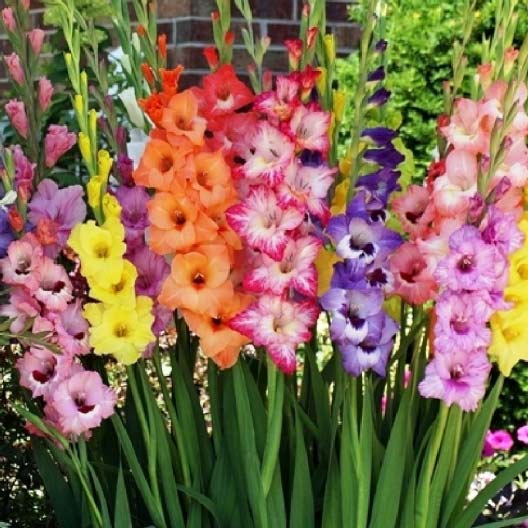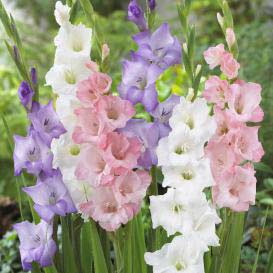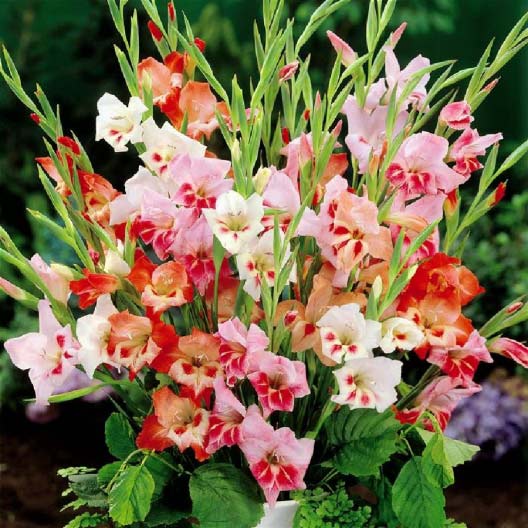Wow! Look at the colors! Selection! New bi-colors and tricolors. Plus, one beautiful flower (“The Peacock Orchid”) you didn’t even know was a glad.

I like glads for two big reasons.
- They’re inexpensive (Our Spring bulbs are on sale during winter for big savings: shipping begins in March, warmest zones first.) and easy to grow.
- Unlike lots of other flowers, if you don’t start them early in spring, they don’t care. Most other flowers if planted late are never at their best. We know you’re busy in spring, and if you don’t get the glads done, no worries. Glads do great as long as you plant them by July 4th or so.
The best for kid gardeners.
There’s another great thing about glads….kids love them! They love planting them, growing them, and cutting them for bouquets. Glads never disappoint. So if you have a budding gardener around, give him or her glads!
They take no space. Another big bonus? They take almost no space. You can put in a clump or a row almost anywhere there’s good sun—between other plants, in front of shrubs, almost anywhere.
Successive planting for successive flowers. Every experienced glad grower knows this. You can plant a few just after frosts, and then some more every two weeks until about the 4th of July. And they’ll all do well…they’ll just bloom in succession, giving you months of color in the garden and great bouquets in the house.
A great history. The Gladiolus is native to South Africa, where it was called the “Sword Lily,” referring to its sword-shaped leaves. They were used for medicinal purposes in Olde England, but always celebrated for their beauty. Most astounding is that there were only seven original varieties, but today, you have your choice of over 10,000—every color from pure white to almost black, and the most incredible bi and tri-colors ever. Look carefully at the old hybrids. Very few are more beautiful.

As for botanical perfection, the glad bulb is not really a bulb, it’s called a “corm.” But you can call it whatever you like. Enjoy !
How about next year? Glads are actually perennials, but only in frost-free areas. So they need to be lifted like dahlias. Once frost arrives, pull them up and you’ll find little bulblets have formed around the main one. It’s best to remove these, since they’ll simply rob nutrition from the parent if you replant the whole thing. Dry them in the sun, snap off the old tops, and put the bulbs you’re saving into a paper (not plastic) bag and store in a dry place that doesn’t freeze….garage, basement, closet, etc. They’ll be more than ready to grow and bloom again once next spring comes. Plant after frost is past, and on into July.
The two types of “other Glads” There are two types of glads that are botanically different from the favorites.
Hardy Glads
The first group is called Gladiolus nanus, which are commonly called the “hardy” glads. Yes, unlike the ordinary glads, they are perennial and will “come back” if left in the ground overwinter, but only south of Zone 5. They’re a bit shorter than common glads, but particularly beautiful, with dramatic contrast color splotches on the petals. These are some people’s favorites.

Peacock Orchid
The other different type is a bulb flower called “Peacock Orchid” or Gladiolus acidanthera. These small bulbs grow into really beautiful butterly-like blooms of purple and white. They’re great just popped in between other plants, or massed in front of shrubs; they bloom in mid-summer, and make great cut flowers, like all glads.
